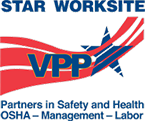On Land or Offshore Rescue: What's the Difference?
At first you might think there’s not much difference in offshore rescue vs. on-land rescue, and there’s not that much difference in the rope rescue techniques and equipment used. But keep in mind what the “offshore” Rescue Technician may face when on the job. While offshore installations often feature similar structures and platforms to those on land, these emergency responders have a mymarid of other challenges. Yes, the fundamentals of rescue and equipment remain fairly consistent. However, the offshore environment introduces some interesting hurdles worth addressing.
Being on an “Island”
 For one example, offshore rescue personnel must operate in isolation – like on an island to themselves! These platforms can literally be located hundreds of miles offshore. Unlike on land, where backup professional responders and medical personnel can often arrive within an hour, offshore responders are the sole line of defense. Day and night shift personnel may support each other in emergencies – even though “rescue” is not their only job on the rig. However, the absence of immediate external backup places all responsibility on the onsite team.
For one example, offshore rescue personnel must operate in isolation – like on an island to themselves! These platforms can literally be located hundreds of miles offshore. Unlike on land, where backup professional responders and medical personnel can often arrive within an hour, offshore responders are the sole line of defense. Day and night shift personnel may support each other in emergencies – even though “rescue” is not their only job on the rig. However, the absence of immediate external backup places all responsibility on the onsite team.
"Offshore teams must train rigorously, preparing for “what if” scenarios to ensure they can handle unexpected complications."
This isolation underscores the importance of contingency planning and advanced action plans. Of course, safety and emergency response personnel do everything possible to keep an incident from occurring. However, offshore teams must train rigorously, preparing for “what if” scenarios to ensure they can handle unexpected complications. The training must include contingency exercises, focusing on identifying potential pitfalls and ensuring that the team can adapt when things go wrong.
Regulations and Operating Guidelines
Regulations differ for offshore facilities as compared to onshore work. OSHA regulations may or may not apply depending on the physical location of the platform. There is a reference chart on this at OSHA.gov. There are also other regulatory agencies that affect offshore work, such as the U.S. Coast Guard, API (American Petroleum Institute), BSEE (Bureau of Safety and Environmental Enforcement), etc. As always, emergency responders need to make sure they are knowledgeable and in adherence with all applicable safety regulations.
Rescue Equipment
While the rescue gear may be pretty much the same, an offshore team must make sure they have the equipment they need in ample supplies for backup needs and replacements. However, perhaps an even bigger consideration is equipment care and storage. The sea air can quickly affect your equipment. Much of the gear used in rescue, such as carabiners, webbings, and ropes, is susceptible to moisture and salt. Prolonged exposure can lead to corrosion and material degradation. Proper storage is critical to protect equipment from the elements. Ensuring your gear is stored in sealed, controlled environments can extend its lifespan and reliability in emergency scenarios.
 Getting Patients to Definitive Care
Getting Patients to Definitive Care
Unlike on land, where an ambulance is just a phone call away, offshore platforms require prearranged logistics for medical evacuations. Typically, companies operating these installations have agreements with air ambulance services. In emergencies, paramedics on the platform, often working under expanded scopes of practice with direct lines to medical directors, provide initial care. They may handle tasks like sutures or administering IV antibiotics to prevent unnecessary evacuations.
"Offshore responders must train to stabilize patients effectively – understanding that definitive care may be hours (or even days) away in extreme cases."
For life-threatening emergencies, these prearranged air ambulance agreements ensure a more timely transport. Without them, delays in care could mean the difference between life and death. Offshore responders must train to stabilize patients effectively – understanding that definitive care may be hours (or even days) away in extreme cases.
Using Cranes for Patient Movement
Here’s another difference for offshore operations. Cranes play a unique role and are often used to transport patients between platform levels or to staging areas for air ambulance transfer. Regulations dictate that cranes should only be used when it is the safest option, not for convenience.
"Regulations dictate that cranes should only be used when it is the safest option, not for convenience."
Three critical rules apply:
-1.jpg?width=436&height=291&name=shutterstock_561615160%20(1)-1.jpg) No blind lifts: Operators must maintain clear visibility at all times.
No blind lifts: Operators must maintain clear visibility at all times.- Use taglines: These allow personnel to maintain control over the load.
- OIM approval: The Offshore Installation Manager (OIM) makes the final decision, ensuring that crane use prioritizes patient safety.
The decision to use a crane is based on the situation’s logistics, such as avoiding prolonged manual transport that could worsen a patient’s condition or concerns for lifts with fatigued rescuers.
Same Techniques, Different Logistics
While you might not find an “offshore-specific” rescue technique in the books, standard rope rescue techniques generally apply in both settings. Rescue fundamentals don’t change; gravity and friction remain constant. However, the logistics of moving people from a hazardous location to a safe one—from a place where they can’t get care to one where they can—differ significantly offshore. Challenges like equipment storage, patient care logistics, and crane use highlight the need for tailored planning and preparation.
To operate efficiently offshore, teams must proactively address these nuances. Similarly, they must train like all professional rescuers, plan for contingencies, and build relationships with medical evacuation services. Ultimately, this preparation ensures that when an emergency arises, the team can operate safely and effectively.
Key Points
- Training for Isolation: Offshore teams must train extensively for contingencies due to the lack of immediate external backup.
- Patient Logistics: Offshore platforms require prearranged air ambulance agreements.
- Equipment Maintenance: Sea air accelerates corrosion; proper storage is essential.
- Cranes in Rescue: Cranes are used only when safer than manual transport, under strict regulations.




